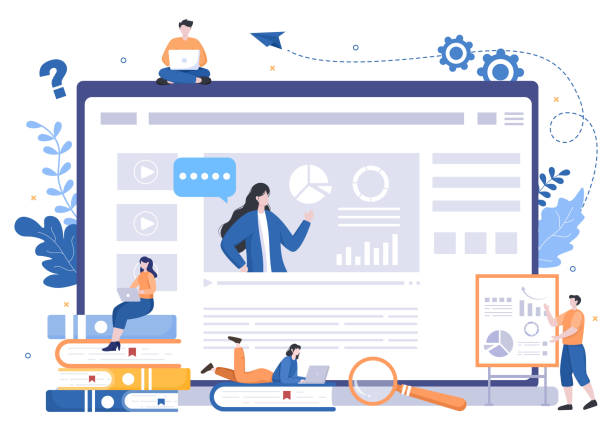The Importance of Modern User Interface in Today’s World

In the current digital age, website design with a modern user interface is no longer a competitive advantage, but an undeniable necessity.
Imagine visiting a website that is difficult to navigate, has unreadable fonts, or does not display correctly on different devices.
Poor user experience (UX) and inappropriate user interface (UI) quickly lead to loss of visitors.
Designing a website with a modern user interface not only makes your website visually appealing but also makes user interaction smooth and enjoyable.
This includes important elements such as #simplicity in design, #ease of use, and #responsiveness across different devices.
A website design with a modern approach attracts user trust and helps them stay on the site.
When a user can easily find the information they need or perform the desired operations, the likelihood of them returning to the site and becoming a loyal customer significantly increases.
For this reason, investing in user-friendly and up-to-date user interface design is a smart decision for any business looking for success in the online space.
User interface is considered the cornerstone of success in the competitive web world.
Tired of losing customers due to poor e-commerce website design? With Rasaweb, solve this problem forever!
✅ Increase sales and visitor-to-customer conversion rates
✅ Smooth and engaging user experience for your customers⚡ Get a free consultation
Key Principles of User-Centered Design for Modern Websites

User-Centered Design is a philosophy at the heart of every website design with a modern user interface.
This approach is based on the principle that all design decisions should be made with a focus on the needs, behaviors, and goals of the end-users.
The first step in this path is a deep understanding of the audience; who they are, what they are looking for, and how they will interact with your site.
Important principles such as Usability, Accessibility, Consistency, and Feedback play a vital role in this regard.
A highly usable website allows the user to achieve their goals without confusion or excessive effort.
Accessibility also ensures that the site is accessible and usable for all users, including people with disabilities.
Consistency in design, such as using fixed patterns for navigation and visual elements, makes the user feel familiar and predictable.
Finally, providing appropriate feedback to the user after each interaction gives them a sense of control and confidence.
Implementing these principles in user-centered website design not only improves the user experience but also significantly helps increase conversion rates and customer loyalty.
This approach requires trial and error, continuous feedback collection, and design iteration to achieve the best possible results.
The Role of Visual Hierarchy and Aesthetics in User Experience

Aesthetics and visual hierarchy are two inseparable components in website design with a modern user interface that directly impact the user experience.
Visual hierarchy refers to organizing elements on a page in a way that draws the user’s attention in order of importance.
This is achieved through the intelligent use of font sizes, colors, white space, contrast, and element arrangement.
For example, a large, bold heading immediately grabs attention, while smaller texts provide more detailed information.
Correct use of visual hierarchy allows the user to easily scan key information and find their way on the page, without feeling confused.
On the other hand, website aesthetics include the careful selection of color palettes, fonts, images, and graphic elements.
An attractive and harmonious visual design not only conveys a sense of professionalism and trust but can also influence user emotions and make their experience more enjoyable.
Below is a table of modern color palettes and their applications, which can help in better understanding this topic.
| Palette Name | Color Codes (Example) | Concept and Application |
|---|---|---|
| Calm and Minimal | Suitable for corporate, artistic, and portfolio websites seeking a sense of simplicity and sophistication. | |
| Vibrant and Dynamic | Ideal for creative websites, startups, and products that want to reflect energy and youth. | |
| Natural and Organic | Suitable for environmentally friendly brands, natural products, and health and wellness websites. | |
| Dark and Luxurious | For fashion websites, advanced technology, and luxury brands seeking a powerful and elegant look. |
The selection of appropriate color palettes and fonts, along with the use of a powerful visual hierarchy, not only enhances the website’s aesthetics but also helps users process information quickly and have a positive interaction experience with the site.
The Importance of Responsive Design and Mobile-First Approach

In today’s world, where users access the internet from various devices, website design with a modern user interface is virtually meaningless without considering Responsive Design.
Responsive design means that your website should automatically adjust its layout and content to the user’s screen size (from large desktop computers to tablets and smartphones).
This ensures an optimal and consistent user experience on any device.
The lack of responsive design not only harms the user experience but can also affect your site’s SEO ranking, as search engines like Google prioritize mobile-friendly websites.
Beyond responsive design, the Mobile-First approach has gained increasing importance.
This approach means that website design and development are initially done for the smallest screen (usually smartphones) and then gradually optimized for larger screens.
The reason for this approach is that most internet users today access websites via their mobile devices.
By designing from small to large, designers are forced to focus on core content and essential features, which itself leads to greater simplicity and efficiency.
A website with a mobile-first approach not only provides an excellent user experience on mobile but also naturally scales well for larger devices.
This approach is at the core of every successful project in modern user interface design.
Do you dream of a thriving online store but don’t know where to start?
Rasaweb is your comprehensive e-commerce website design solution.
✅ Attractive and user-friendly design
✅ Increased sales and revenue⚡ Get a free consultation
Interactive Elements and Micro-interactions in Modern Design

In website design with a modern user interface, attention to small details can make a big difference.
Interactive elements, especially Micro-interactions, play a key role in improving the user experience and creating a sense of dynamism and enjoyment in interacting with a website.
Micro-interactions are small animations or feedback that occur in response to user actions, such as a button changing color when hovered over, a subtle loading indicator, or small effects when clicking an icon.
These small details not only provide visual guidance to the user and inform them of the system status (e.g., “Loading…”), but can also convey a sense of delight and surprise.
For example, a subtle animation after adding a product to the cart, or a small haptic feedback in mobile forms, significantly enriches the user experience.
The goal of these interactive elements is to build an emotional connection with the user and create an engaging and intuitive user experience.
Intelligent use of these elements can make your website feel alive and responsive, giving users the sense that they are interacting with a dynamic entity, not a static page.
This specialized approach in advanced UX/UI design adds more depth and efficiency to your website and allows it to shine among competitors.
User Testing and Iterative Design Process

No matter how perfectly a designer thinks they have executed their modern user interface website design, the reality is that only through User Testing can it be ensured that the website is truly efficient and user-friendly for the target audience.
User testing is a process where real users interact with the website or its prototype, while designers and researchers observe and record their behaviors, thoughts, and feedback.
This vital process helps identify usability issues, blind spots in navigation, and areas that need improvement.
The feedback collected from user testing provides valuable information for the Iterative Design Process.
In this process, website design is carried out in a cycle of design, prototyping, testing, and refinement.
Each cycle is refined based on the results and feedback from previous iterations to gradually achieve an optimal and user-friendly solution.
This iterative approach ensures that the final design is not only visually appealing but also truly meets user needs and expectations.
Neglecting this step can lead to designs that are aesthetically pleasing but practically confusing or inefficient for users.
Ultimately, testing and iteration are the cornerstones of success in building a website with an excellent and modern user experience.
Tools and Technologies for Modern UI/UX Development
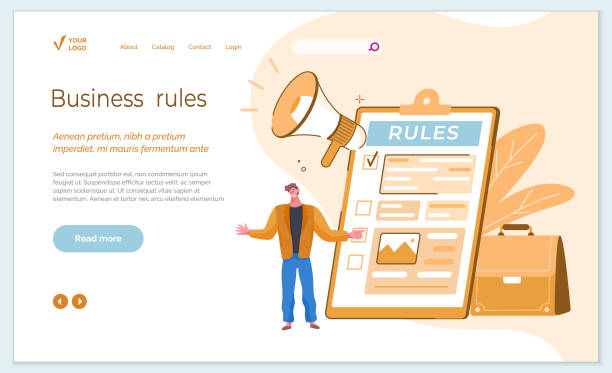
Technological advancements have provided powerful tools and frameworks to designers and developers that help them create website designs with modern user interfaces.
In the design realm, software such as Figma, Sketch, and Adobe XD have become industry standards.
These tools offer rapid design and prototyping capabilities and enable real-time team collaboration, which is crucial for large projects.
Figma has gained immense popularity due to its cloud-based nature and powerful collaboration features.
On the development side, modern front-end frameworks like React, Vue.js, and Angular have made building complex and interactive user interfaces much easier.
These frameworks enable component-based development, which aids in code reusability and easier maintenance.
Also, CSS libraries like Tailwind CSS and Bootstrap help accelerate the styling process and ensure design responsiveness.
Choosing the right tool and technology depends on project needs, team size, and performance priorities.
Below is a comparative table of some of these tools.
| Tool/Framework | Type | Primary Use | Key Feature |
|---|---|---|---|
| Figma | UI/UX Design Tool | UI Design, Prototyping, Wireframing | Real-time Collaboration, Browser-based |
| Adobe XD | UI/UX Design Tool | UI Design, UX, Advanced Prototyping | Integration with Adobe products, Strong Prototyping capabilities |
| React | Front-end Framework | Building Interactive and Single-Page User Interfaces | Component-based, Virtual DOM for High Performance |
| Vue.js | Front-end Framework | Developing Single-Page Web Applications and Components | Easy to Learn, High Flexibility, Lightweight |
| Tailwind CSS | CSS Library | Rapid Styling with Utility-first Classes | Highly Customizable, Less need for custom CSS |
Using these advanced tools for developing websites with a modern user interface not only increases efficiency but also helps create higher quality products and unparalleled user experiences.
Informed choice and staying up-to-date with new technologies are key components of success in this field.
The Impact of Artificial Intelligence and Personalization on User Interface
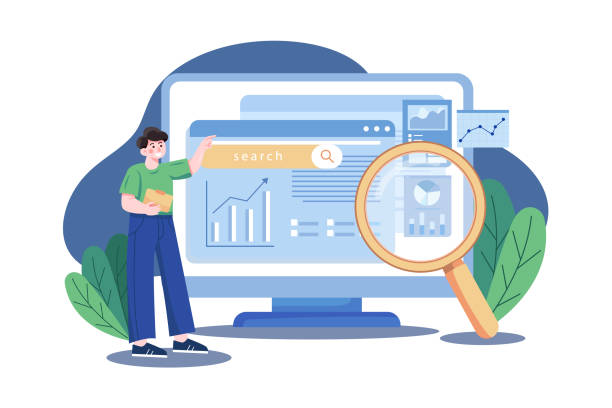
The world of website design with a modern user interface is rapidly evolving, and two significant trends, namely Artificial Intelligence (AI) and Personalization, are profoundly influencing its formation.
AI can analyze user data, identify behavioral patterns, and help designers create smarter and more efficient user interfaces.
From AI-powered chatbots that improve customer support to content recommendation algorithms that personalize the user experience, AI is redefining user interaction with websites.
Personalization, which is highly dependent on AI, means providing content, features, and experiences tailored to the individual needs and preferences of each user.
This can include displaying related products, suggestions based on browsing history, or even adjusting page layouts based on usage patterns.
Websites that personalize the user experience have higher engagement rates and involve users more.
However, the use of AI and personalization also has its own ethical and privacy challenges that designers must address.
Transparency in data collection and allowing users to control their personal information are of paramount importance.
The future of modern user interface design is moving towards AI not only assisting designers in the creation process, but also the user interface itself intelligently and dynamically adapting to each user, offering a unique and unparalleled experience.
These developments will transform the landscape of building websites with excellent user experience.
How much does losing business leads due to an unprofessional site cost you? With professional corporate website design by Rasaweb, solve this problem forever!
✅ Increase credibility and trust of potential customers
✅ Easier acquisition of new business leads
⚡ Get a free consultation now!
Common UI/UX Design Mistakes and Solutions to Avoid Them
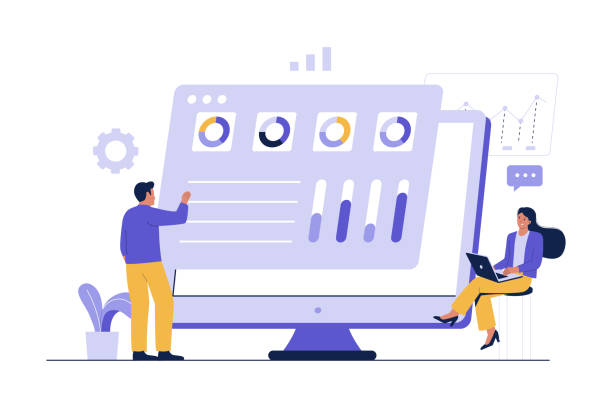
Even in website design with a modern user interface, common mistakes can occur that disrupt the user experience and harm the site’s main goal.
One of the biggest mistakes is over-complexity.
Sometimes designers try to fit all features on one page or use flashy but unnecessary animations, leading to confusion and high cognitive load for the user.
The solution is to always prioritize simplicity and clarity.
Poor navigation is another common error; if users cannot easily find their way around the site, they will quickly leave it.
Using clear menus, breadcrumbs, and logical internal links solves this problem.
Slow loading speed is also a silent killer for user experience.
Today’s users are impatient and expect websites to load instantly.
Image optimization, caching, and efficient coding can help improve speed.
Neglecting Accessibility for users with special needs is a serious mistake that not only ignores a large group of users but can also lead to legal issues.
Always ensure your site is usable by everyone.
Finally, ignoring user feedback is also a fatal mistake.
Design is a living process and should be continuously optimized based on user data and feedback.
By following these tips and taking a continuous approach to improvement, a modern and successful user interface design can be achieved, and common mistakes can be avoided.
The Future of User Interface and User Experience Design
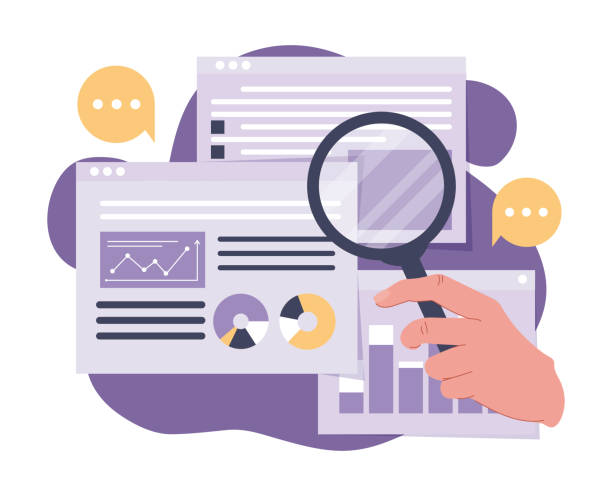
The future of website design with a modern user interface is taking shape, and emerging trends such as Voice User Interface (VUI), Augmented Reality (AR) and Virtual Reality (VR), and Haptic Feedback promise entirely new user experiences.
VUI allows users to interact with systems using voice commands, which can be highly efficient for smart home devices and mobile applications.
Designers must consider how to create natural conversational flows and helpful voice responses.
AR and VR blur the boundaries between the digital and physical worlds.
Imagine being able to view a product in your real space before purchasing it or walking through a virtual store; these create enormous potentials for user experience design.
Haptic feedback, which engages the sense of touch through vibrations and sensors, can make interactions more tangible and engaging, for example, when pressing a virtual button or dragging an element.
These technologies require new design approaches that go beyond the two-dimensional screen.
UI/UX designers must be prepared to develop their skills to create multi-sensory and immersive experiences.
The ultimate goal is to build websites with excellent user experience that are not only efficient and beautiful but also interact with each user in an intuitive and immediate manner.
These exciting developments outline a bright future for modern user interface design.
Frequently Asked Questions
| Question | Answer |
|---|---|
| What is modern UI website design? | It is an approach that focuses on simplicity, visual appeal, user-friendliness, and the use of the latest design trends. |
| What are the key principles of modern UI? | Simplicity, clarity, accessibility, responsiveness, and focus on user experience. |
| Why is the use of Whitespace important in modern design? | Whitespace helps readability, user focus on content, and creates a sense of order and beauty. |
| What is the role of typography in modern UI? | Choosing the right font significantly helps brand identity, text readability, and creating visual hierarchy. |
| How can colors be effectively used in modern design? | Strategic use of an appropriate color palette to guide the user’s eye, create brand mood, and improve accessibility. |
| What role do visual elements like icons and images play? | These elements contribute to visual appeal, quick message transmission, and improved user understanding of content. |
| What is the importance of responsiveness in modern design? | It is essential for the site to have an optimal appearance and correct functionality on all devices such as mobile, tablet, and desktop. |
| How does modern UI contribute to User Experience (UX)? | By creating an attractive and user-friendly visual environment, easier navigation, and more enjoyable interaction, the overall user experience is improved. |
| What are some common trends in modern UI? | Dark Mode, Neumorphism, Glassmorphism, subtle animations, and micro-interactions. |
| What steps are necessary to achieve a modern user interface? | User research, wireframing and prototyping, user testing, and using up-to-date tools and frameworks. |
And other services of Rasaweb Advertising Agency in the field of advertising
- Smart Conversion Rate Optimization: A novel service to increase click-through rates through Google Ads management.
- Smart Data Analysis: A fast and efficient solution to increase click-through rates with a focus on marketing automation.
- Smart Digital Advertising: An innovative platform to improve website traffic growth through intelligent data analysis.
- Smart Sales Automation: An effective tool for campaign management by optimizing key pages.
- Smart Marketing Automation: A dedicated service for online growth based on custom programming.
And hundreds of other services in the field of internet advertising, advertising consultation, and organizational solutions
Internet Advertising | Advertising Strategy | Advertorial
Resources
Digital Transformation Challenges in Iran – Digiato
Principles of Modern User Interface and User Experience Design – WebRamz
Comprehensive Website Design Guide – Namapardaz
The Impact of Digital Transformation on Web Design – Karboom
? With Rasaweb Afarin, transform your business in the digital world. We pave your path to online success by providing comprehensive digital marketing services including multilingual website design, SEO, and social media management. For a free consultation and to learn more about our solutions, contact us today.
📍 Tehran, Mirdamad Street, next to Central Bank, Southern Kazeroun Alley, Ramin Alley, No. 6

